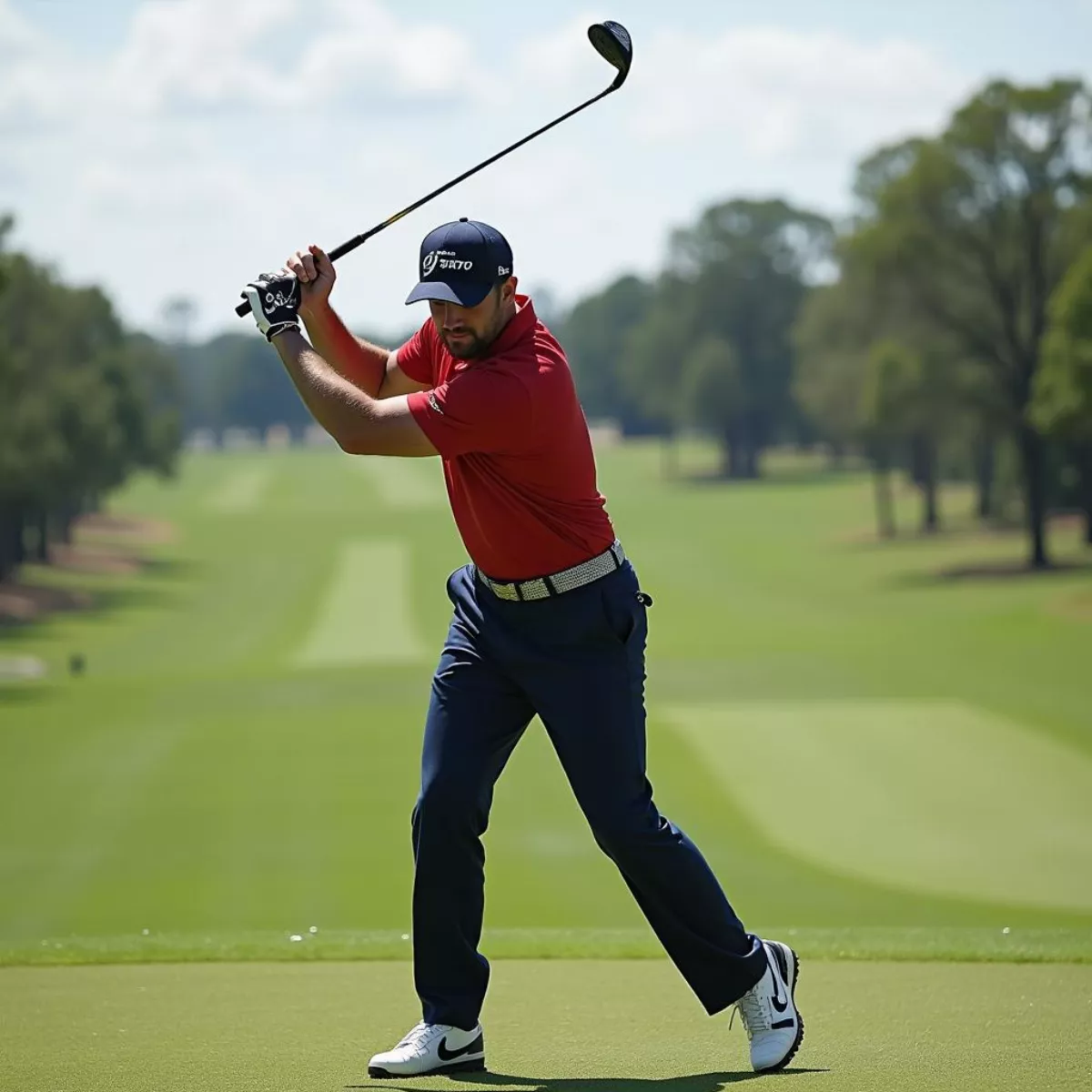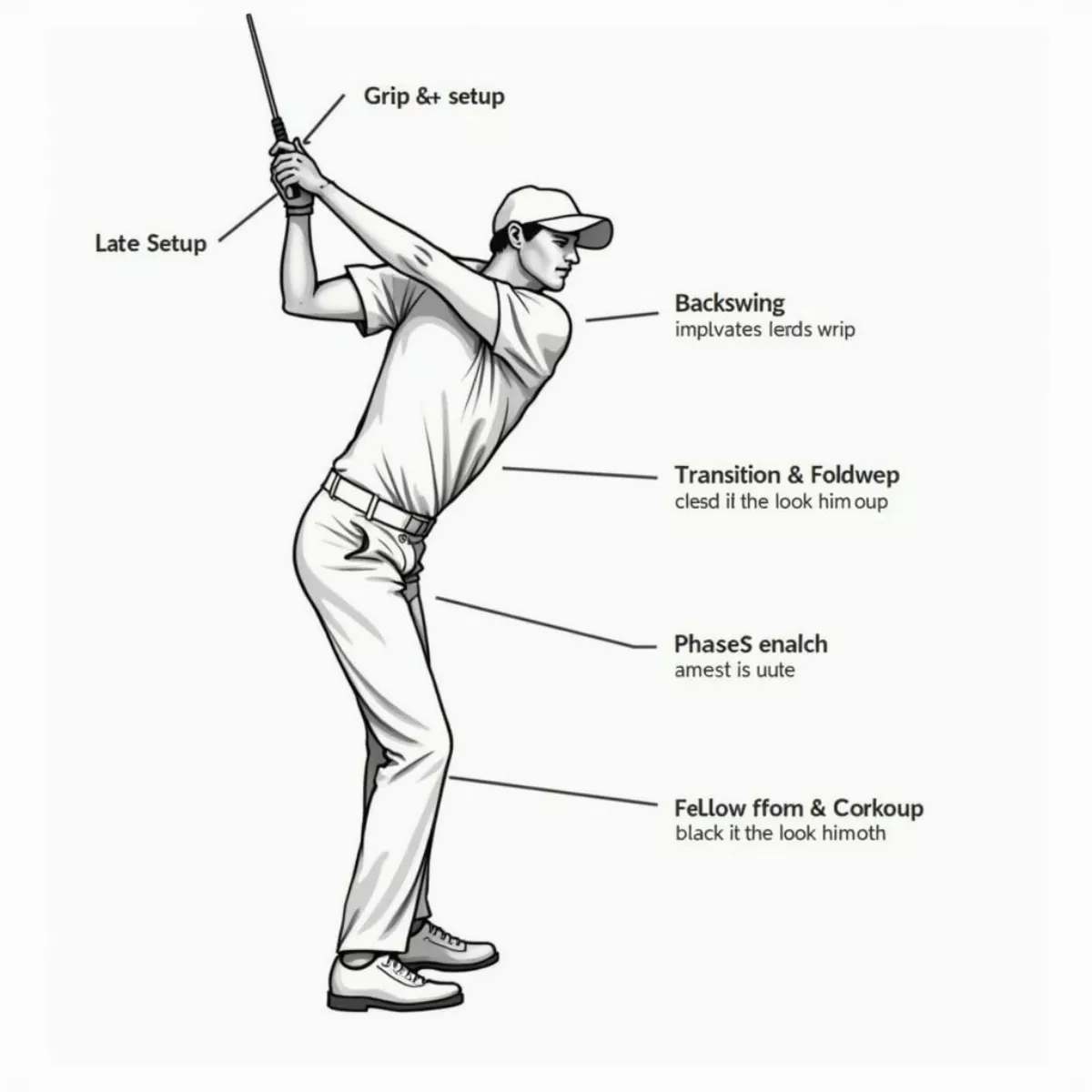When it comes to golf, achieving the perfect swing, especially with a driver, can seem like an elusive goal for many players. Enter Grant Horvat, a rising star in the golf community and a valuable source of knowledge when it comes to refining your golfing technique. In this article, we’ll dive into Horvat’s top tip for a perfect driver swing, drawing insights from his expertise, his experiences with Golf Shorts, and the popular MeandMyGolf platform. Whether you’re new to golf or looking to fine-tune your skills, this guide aims to provide actionable advice that’ll help you master your swing.
Understanding the Driver Swing
Before we jump into Grant Horvat’s top tip, it’s essential to understand the driver swing and its significance in the game of golf. The driver is one of the most powerful clubs in your bag, designed for distance. Therefore, honing your swing with this club is critical to gaining an advantage on the course.
The Basic Components of a Driver Swing
For a successful driver swing, there are several key components to focus on:
- Grip: Your grip should be firm but relaxed. A common mistake is gripping too tightly, which can restrict your swing.
- Stance: Position your feet shoulder-width apart and align the ball off the inside of your front foot.
- Posture: Keep your back straight and bend slightly from the hips.
- Backswing: A smooth and controlled backswing sets the stage for a powerful follow-through.
- Downswing: Initiate the downswing with your lower body, allowing the upper body to follow naturally.
- Follow-through: Finish high and balanced, facing your target.
 Golf Driver Swing Basics
Golf Driver Swing Basics
Grant Horvat’s Top Tip for a Perfect Driver Swing
Now that we have a grasp on the fundamentals, let’s focus on Grant Horvat’s top tip for achieving a perfect driver swing.
The Key: “Stay Relaxed and Maintain Rhythm”
According to Grant, staying relaxed and finding your rhythm are critical aspects that will transform your driver swing. He emphasizes that players often become tense and overthink the swing mechanics, leading to inconsistent shots. Here’s how to implement this key tip:
- Breathe: Before you start your swing, take a deep breath. This simple act can alleviate tension and help you focus.
- Slow Down Your Tempo: Many golfers get caught up in the idea that power equals speed. Instead, focus on a smooth, controlled tempo. Grant suggests counting to three during your backswing to ensure you don’t rush the shot.
- Practice Visualization: Visualizing your swing can help create a mental rhythm. Picture a successful swing before executing it. This technique can enhance your confidence and reduce anxiety.
- Swing Within Yourself: Avoid the temptation to over-swing or use excessive force. Remember, a relaxed swing will yield better results. As Grant puts it, “Power comes from relaxation, not from tension.”
 Grant Horvat Demonstrating a Golf Swing
Grant Horvat Demonstrating a Golf Swing
A Deep Dive into Technique
To elaborate on Grant’s tips, let’s break down each phase of the swing with an educational perspective:
1. Grip and Setup
- Use a neutral grip.
- Ensure your setup is square to the target line.
- Ball position: Align it just inside your left heel for optimal launch angle.
2. Backswing Mechanics
- Keep your left arm straight while maintaining slight bend in your right elbow.
- Rotate your shoulders fully for maximum coil.
3. Transition to Downswing
- Shift your weight to your left side.
- Lead with your hips, allowing your arms to drop into the slot without forcing.
4. Follow-Through Essentials
- Your chest should face your target after impact.
- Balance is critical; ensure your weight is on your front foot.
| Phase of Swing | Key Points |
|---|---|
| Grip and Setup | Neutral grip, square alignment, ball position |
| Backswing | Straight left arm, full shoulder rotation |
| Transition | Shift weight, lead with hips |
| Follow-Through | Chest to target, balance on front foot |
 Golf Swing Phases Breakdown
Golf Swing Phases Breakdown
Practice Drills to Enhance Your Swing
Incorporating practice drills into your routine can solidify the concepts discussed above. Here are three effective drills focused on rhythm and relaxation:
- Pendulum Drill:
- Take your stance with your driver.
- Without making a full swing, practice using your arms in a pendulum motion, focusing on a slow, relaxed tempo.
- Weighted Club Drill:
- Use a weighted club or attach weights to your driver.
- Take slow practice swings, focusing on maintaining your rhythm with the added resistance.
- Mirror Drill:
- Use a mirror to check your posture, grip, and follow-through.
- Ensure you maintain a relaxed demeanor throughout your swing’s different phases.
Tips for Consistent Performance on the Course
Achieving a perfect driver swing is one aspect; however, consistent performance on the course involves additional strategies:
- Course Management: Make strategic decisions on when to pull out the driver versus other clubs.
- Mental Game: Develop a pre-shot routine that helps you stay relaxed and focused.
- Conditioning: Engage in physical fitness to improve strength, flexibility, and stamina.
 Golfer Preparing for a Shot
Golfer Preparing for a Shot
Key Takeaways
- Grant Horvat recommends focusing on being relaxed and finding your rhythm for a perfect driver swing.
- Key techniques include proper grip, setup, backswing, transition, and follow-through.
- Effective practice drills can solidify your swing mechanics and promote a natural rhythm.
- Additional strategies for consistent course performance include sound course management and a strong mental game.
Frequently Asked Questions (FAQ)
1. What is the best grip for drivers in golf?
The best grip for drivers is a neutral grip where your hands are aligned comfortably on the club, allowing for a full swing without tension.
2. How can I improve my rhythm in my driver swing?
To improve your rhythm, focus on a slow and controlled swing. Counting during your backswing can help maintain a consistent tempo.
3. What drills can help with my driver swing?
Pendulum drills, weighted club drills, and mirror drills are excellent for enhancing your swing technique and rhythm.
4. Should I prioritize power or accuracy with my driver?
It’s important to balance both; however, focusing on technique and rhythm often leads to better power, which in turn can improve accuracy.
5. How can mental preparation help my driving game?
Mental preparation helps reduce anxiety and provides focus, which can lead to a more relaxed and fluid swing.
6. How often should I practice my driver swing?
Regular practice is essential; aim for at least 1-2 sessions per week focused specifically on your driver swing.
7. Is it necessary to take lessons from a pro to improve my driver swing?
While professional lessons can greatly benefit your technique, consistent practice with mindful observation can also lead to significant improvements.
8. What should I do if I slice my drives consistently?
Work on your grip pressure and alignment. Also, consider practicing with a launch monitor to understand your swing path better.
9. Can I use a different stance with my driver and iron shots?
Yes, your stance should vary between clubs. A wider stance is typically more effective with the driver.
10. How can fitness improve my driver swing?
Improving your overall fitness can enhance strength, flexibility, and stamina, which are vital for a powerful and consistent swing.
By focusing on Grant Horvat’s top tip and understanding the nuances of your driver swing, you’ll set yourself up for success on the golf course. Whether you’re a beginner or a seasoned player, remember that relaxation and a natural rhythm are central to achieving that perfect swing. Happy golfing!

